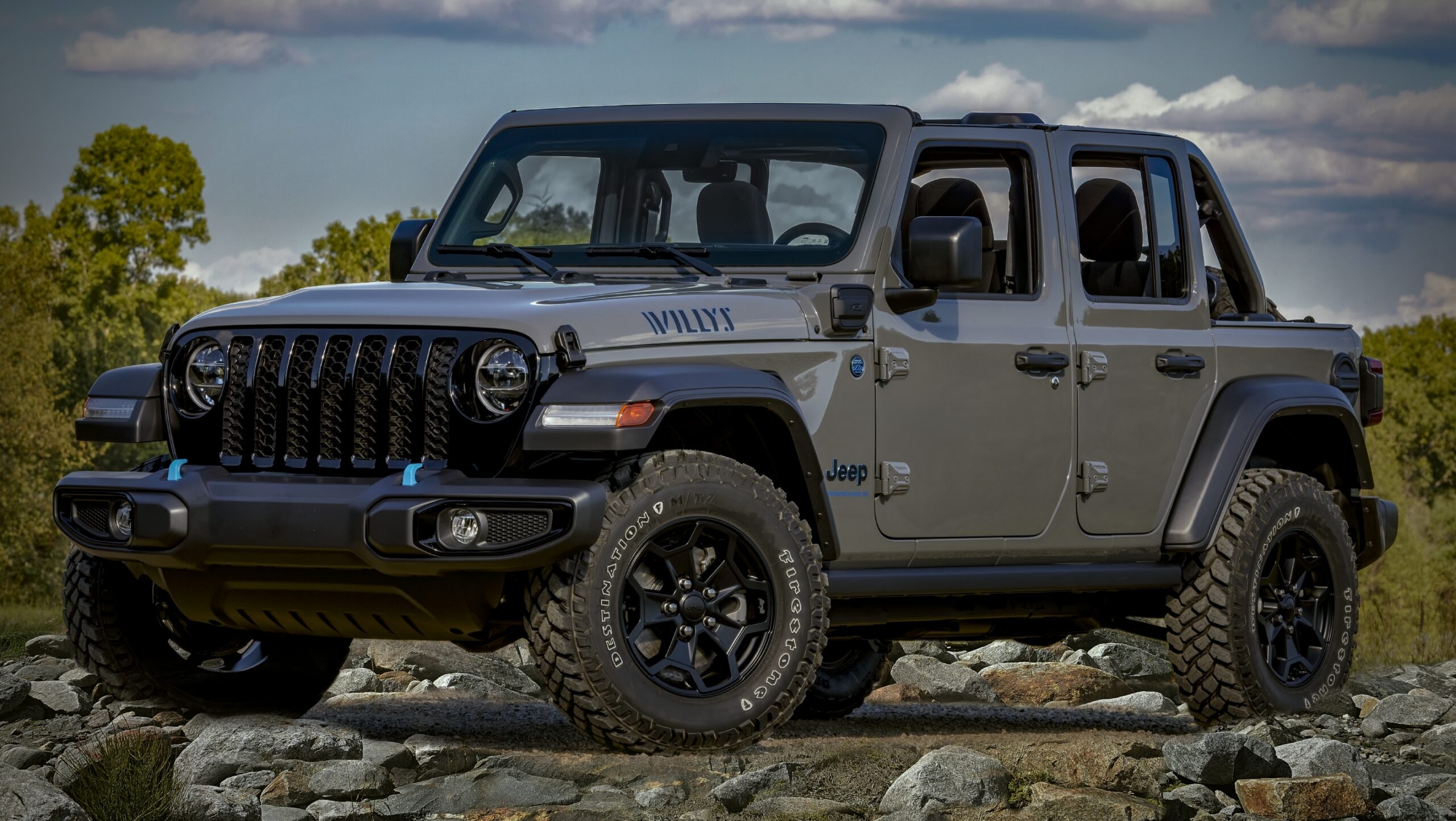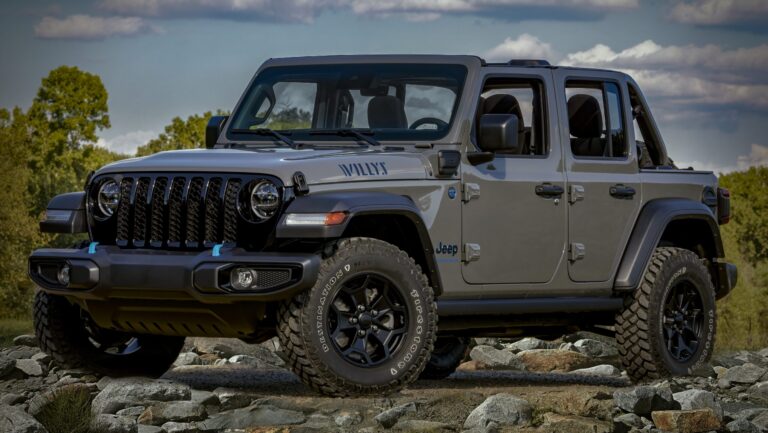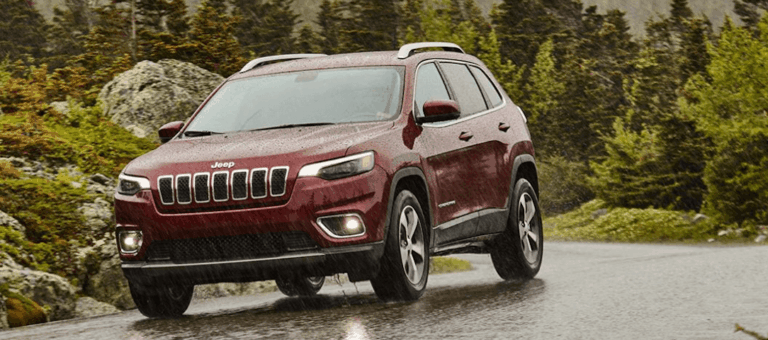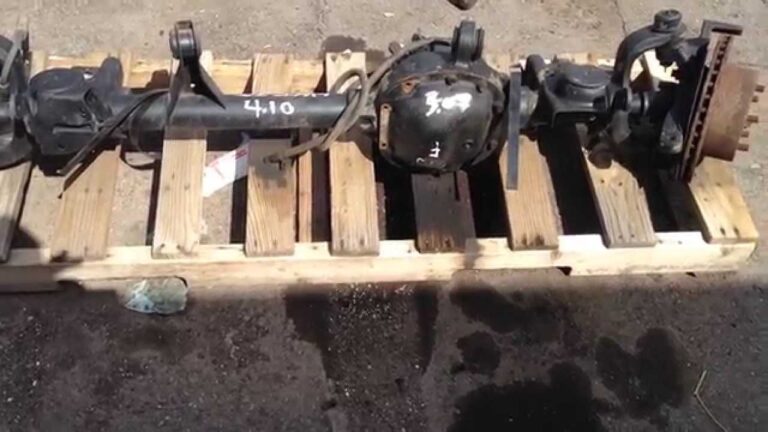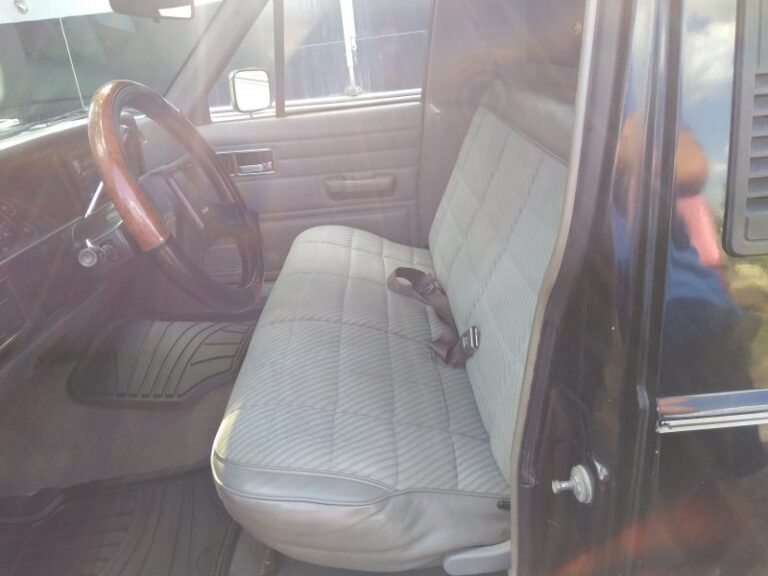Jeep YJ Axles For Sale: A Comprehensive Guide to Upgrading and Replacing Your Wrangler’s Foundation
Jeep YJ Axles For Sale: A Comprehensive Guide to Upgrading and Replacing Your Wrangler’s Foundation jeeps.truckstrend.com
The Jeep Wrangler YJ, with its iconic square headlights and leaf-sprung suspension, holds a special place in the hearts of off-road enthusiasts and classic Jeep lovers. Built from 1987 to 1995, the YJ is a rugged platform, but like any vehicle, its components have limitations, especially when pushed beyond stock capabilities. Among the most critical components for any serious off-roader are the axles. For many YJ owners, finding the right "Jeep YJ axles for sale" isn’t just about repair; it’s about unlocking new levels of performance, durability, and customization.
This comprehensive guide will delve into everything you need to know about purchasing axles for your Jeep YJ, from understanding stock configurations to exploring heavy-duty upgrades, where to find them, and crucial considerations before you buy. Whether you’re replacing a broken component, planning a major build, or simply looking to beef up your YJ for the trails, the information here will serve as your essential resource.
Jeep YJ Axles For Sale: A Comprehensive Guide to Upgrading and Replacing Your Wrangler’s Foundation
Understanding Jeep YJ Axles: Stock Configurations & Their Limitations
To appreciate the need for an axle upgrade, it’s vital to understand what your YJ came with from the factory. Most Jeep YJs were equipped with:
- Front Axle: Dana 30 (Reverse Rotation)
- This is a common front axle across many Jeep models. It’s reasonably strong for its size and adequate for stock tire sizes (up to 30-31 inches) and light to moderate off-roading. However, its small ring and pinion, 27-spline axle shafts, and relatively weak U-joints become weak points when larger tires (33 inches and up), locking differentials, or aggressive driving are introduced. The reverse rotation design is specific to YJs and TJs, optimized for the higher pinion angle of the factory suspension.
- Rear Axle: Dana 35 (C-Clip)
- The Dana 35 is arguably the weakest link in the YJ drivetrain for serious off-roading. Its 27-spline axle shafts are prone to breaking, and the "C-clip" design, which retains the axle shaft within the housing, means that if a shaft breaks, the wheel and tire can potentially slide out of the axle housing. This axle is generally not recommended for tires larger than 31-32 inches, especially with lockers or aggressive driving.
- Rear Axle: Dana 44 (Rare Option)

- A small percentage of YJs, primarily those equipped with the optional towing package, came with a Dana 44 rear axle. This is a significant upgrade over the Dana 35, featuring a larger ring and pinion, stronger housing, and typically 30-spline axle shafts. If you find a YJ Dana 44 for sale, it’s often considered a highly desirable, near bolt-in upgrade for moderate builds.

While these stock axles are perfectly fine for daily driving and light trail use, their limitations quickly become apparent as owners venture into more challenging terrain, install larger tires, or add locking differentials. This is where the hunt for "Jeep YJ axles for sale" truly begins.
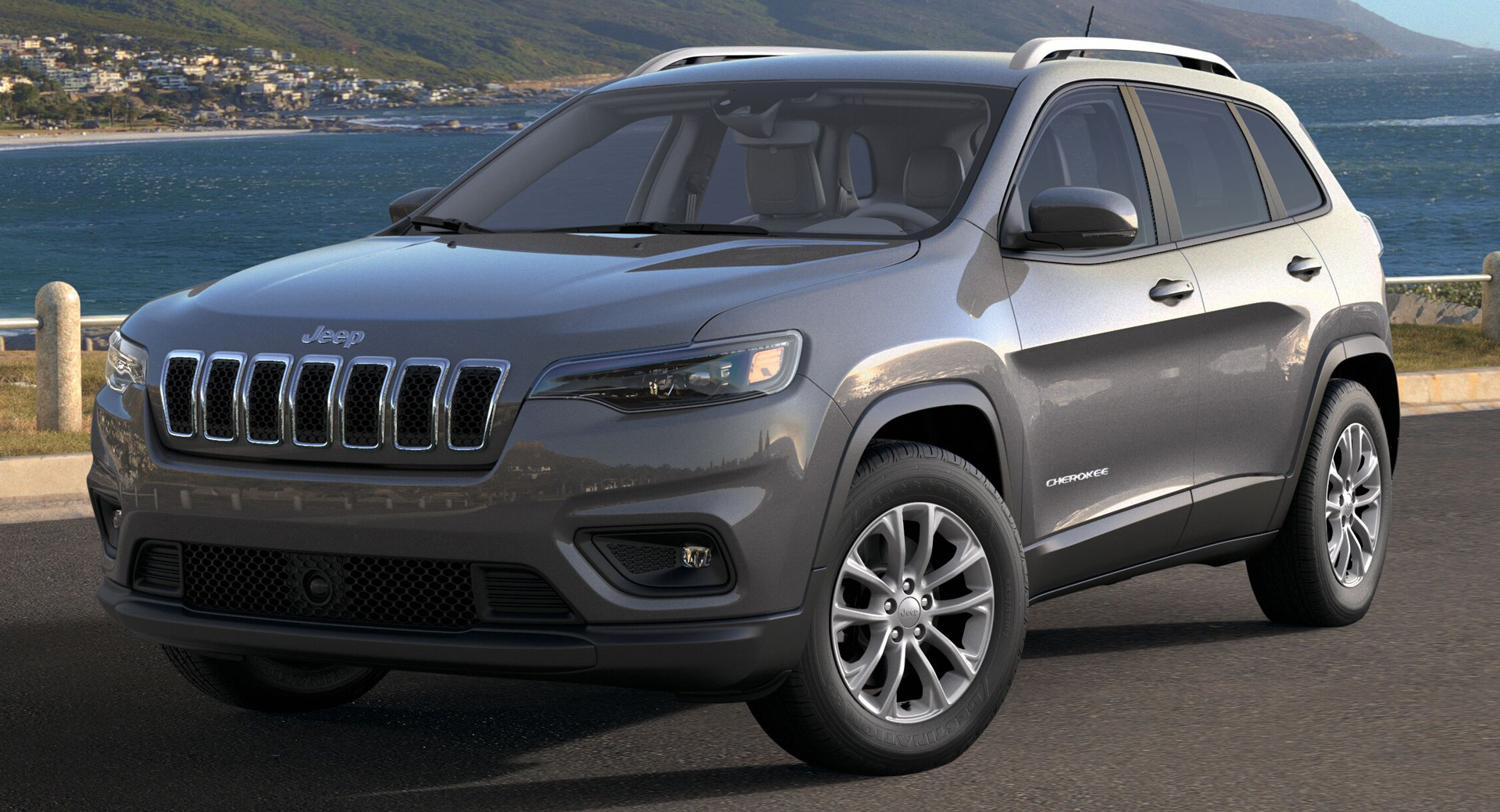
Why Upgrade or Replace Your YJ Axles?
The motivations for seeking out new axles are varied, but generally fall into a few key categories:
- Increased Strength & Durability: The primary reason for upgrading. Larger tires (33"+), lower gearing, and aggressive off-road driving put immense stress on axles. Stronger axles prevent costly and inconvenient trail breakages.
- Damage Replacement: A bent housing, stripped gears, or severely damaged components can render an axle unusable, necessitating a complete replacement.
- Locker Compatibility: Many aftermarket locking differentials require stronger axle shafts or specific carrier designs that stock axles may not accommodate without significant modification or risk of failure.
- Gear Ratio Changes: When installing larger tires, re-gearing the axles is crucial to restore lost power and optimize performance. Upgrading axles provides an opportunity to install the desired gear ratios from the outset.
- Wider Track Width: Some axle swaps (e.g., full-width axles) increase the YJ’s track width, enhancing stability, especially on side hills.
- Disc Brake Conversion: Many upgraded axles come with or are easily convertible to disc brakes, offering superior stopping power compared to the YJ’s stock rear drums.
- Project Builds: From rock crawlers to overland rigs, specific build types demand specific axle characteristics.
Types of Axles Commonly Sought for YJ Swaps
The world of axle swaps for a YJ is vast, ranging from direct bolt-ins to custom fabrication projects. Here are the most common and popular options:
Direct Bolt-In (or Near Bolt-In) Options:
- Stock YJ Dana 30 Front / Dana 35 Rear: Primarily for direct replacement of damaged stock axles. Easy, but offers no strength upgrade.
- YJ Dana 44 Rear: As mentioned, this is the best bolt-in rear upgrade. It uses the correct spring perches and width, offering significant strength over the Dana 35. Rare and often pricey when found.
- Ford 8.8 Rear (from 1995-2001 Ford Explorer/Mountaineer):
- Pros: Very popular, strong (comparable to a Dana 44), readily available, often comes with disc brakes, and can be found with desirable gear ratios and limited-slip differentials (LSDs).
- Cons: Requires welding new spring perches and shock mounts, modifying the parking brake cable, and typically a universal joint conversion (U-bolt style yoke). Some width difference (about 1.5" wider per side).
- Jeep Cherokee XJ Dana 30 Front / Dana 44 Rear (from specific XJ models):
- Pros: Dana 30 front is essentially the same as the YJ, making it a direct swap for replacement. Certain XJs (typically 87-90 with metric ton package) came with Dana 44 rears, which are also a very close match in width and bolt pattern, requiring only new spring perches.
- Cons: XJ Dana 30 is still a Dana 30. XJ Dana 44s are almost as rare as YJ Dana 44s.
Heavy-Duty Swaps (Requiring Fabrication):
These axles offer significantly more strength but demand welding, cutting, and often custom driveshafts.
- Dana 44 (from various vehicles):
- Wagoneer Dana 44s: Popular for front and rear swaps. Front is a passenger-side drop (matches YJ transfer case), offers good strength, and a wider track width. Rear also works well. Requires spring perch relocation and potential brake line fabrication.
- J-Truck/Scout II Dana 44s: Similar to Wagoneer, good options.
- Rubicon TJ/JK Dana 44s: Very strong, but require significant custom work due to coil spring mounts and different widths/bolt patterns. Not a direct bolt-in by any means.
- Ford 9-inch Rear:
- Pros: Extremely strong, legendary for its robust design, easily serviceable, massive aftermarket support, and flexible gearing options.
- Cons: Requires extensive fabrication for mounting, often sourced from older trucks, so condition can vary. Can be heavy.
- Dana 60 / Dana 70 / GM 14 Bolt (Full-Width):
- Pros: The ultimate in strength, virtually unbreakable for most recreational uses. Ideal for extreme rock crawling and very large tires (40"+).
- Cons: Very heavy, significantly wider than the YJ (requires fender flares or cutting), necessitates major suspension fabrication (custom links, coil-overs are common), and extremely expensive. Not for the faint of heart or budget builds.
Aftermarket Crate Axles:
Brands like Currie Enterprises, Dynatrac, G2 Axle & Gear, and Spidertrax offer brand-new, purpose-built axles.
- Pros: Designed for off-road abuse, come with stronger components (larger tubes, shafts, heavy-duty knuckles), custom gear ratios, lockers, and bolt patterns already installed. No guesswork on condition.
- Cons: Extremely expensive, often costing more than the entire YJ itself. Best suited for high-budget, high-performance builds.
Where to Find Jeep YJ Axles For Sale
The search for the perfect axle can take you to various corners of the automotive world. Each source has its pros and cons:
- Online Marketplaces (eBay, Facebook Marketplace, Craigslist):
- Pros: Wide selection, potential for local pickup, competitive pricing. You can often find exactly what you need.
- Cons: Condition can be hard to verify remotely, "as-is" sales, risk of scams, shipping can be expensive for large items.
- Specialized Off-Road Forums & Jeep Groups:
- Pros: Knowledgeable sellers, parts often come from enthusiast builds, detailed descriptions, and community vetting. You might find "build threads" showing the axle’s history.
- Cons: Slower turnover, specific items can be hard to find, may require shipping from long distances.
- Salvage Yards / Junkyards:
- Pros: Potentially the cheapest option, especially for common axles like the Ford 8.8 or XJ Dana 30. You can inspect them in person.
- Cons: Condition is often unknown until removal, labor involved in pulling the axle, no warranty, may be difficult to find specific donor vehicles.
- Off-Road Shops & Specialized Dealers:
- Pros: Axles are often inspected, rebuilt, or brand new. Professional advice, potential for warranty, and can often source specific parts or complete assemblies.
- Cons: Higher prices due to professional services and markup.
- Swap Meets & Off-Road Events:
- Pros: Opportunity to inspect items thoroughly, haggle on price, and connect with other enthusiasts.
- Cons: Limited selection based on what’s brought to the event, may require travel.
Important Considerations When Buying YJ Axles
Buying an axle is a significant investment. Don’t rush the process. Here’s a checklist of critical factors:
- Condition:
- Rust: Surface rust is common, but deep pitting or structural rust is a red flag.
- Bent Tubes: Inspect the axle tubes for any signs of bending or damage.
- Cracks: Check the housing, welds, and mounting points for cracks.
- Bearing Play: Check for excessive play in the pinion or wheel bearings.
- Fluid: If possible, check the differential fluid. Milky fluid indicates water contamination.
- Gear Ratio: Crucial for matching tire size and engine performance. Ensure both front and rear axles have the same ratio if buying a pair, or plan to re-gear.
- Locker/LSD: Does it have a locker or limited-slip differential? Is it the type you want? Factor this into the price.
- Bolt Pattern: YJs use a 5×4.5" bolt pattern. Many popular swap axles (Ford 8.8, Dana 44s from other vehicles) use 5×5.5". This means you’ll need new wheels or wheel adapters, which can be a point of failure.
- Width: Measure the axle’s overall width and compare it to your YJ’s stock width. Wider axles increase stability but may require fender flares or body modifications.
- Mounting Points: Are the leaf spring perches, shock mounts, and control arm mounts present? Are they correctly positioned for a YJ swap, or will they need to be cut off and re-welded?
- Axle Shafts: Are they included? Are they stock or upgraded (e.g., chromoly)? Check for straightness and spline condition.
- Brakes: What type of brakes does it have (disc or drum)? What is their condition? Factor in the cost of new pads, rotors/drums, and calipers/wheel cylinders.
- Price: Compare prices across different sources. A "good deal" might not be one if it requires extensive repairs or additional parts.
- Shipping/Pickup: Axles are heavy and bulky. Factor in shipping costs or the logistics of picking it up.
DIY vs. Professional Installation
An axle swap is not a beginner-level project.
- DIY: Requires significant mechanical aptitude, a well-equipped garage (including a welder for most swaps), fabrication skills (cutting, grinding, welding), and potentially gear setup knowledge. It can save money on labor but takes time and carries risks if not done correctly. Safety is paramount.
- Professional Installation: Recommended if you lack the tools, skills, or time. A reputable off-road shop will ensure the swap is done safely and correctly, including proper welding, gear setup, and brake integration. This is the more expensive option upfront but can save headaches and potential failures down the road.
Practical Advice & Actionable Insights
- Research, Research, Research: Before you even start looking for axles, understand what your YJ’s current setup is, what your build goals are, and what axle types are best suited for those goals.
- Budget Beyond the Axle: Remember the axle itself is just one part of the cost. Factor in new brakes, axle shafts (if needed), gears, lockers, driveshafts, suspension modifications, and potentially new wheels/tires.
- Inspect Thoroughly: If buying used, always try to inspect the axle in person. Bring a flashlight, a tape measure, and a magnet. Don’t be afraid to ask questions and take pictures.
- Ask for Documentation: If buying from a rebuilder or a specialized shop, ask for any documentation regarding the rebuild process or components used.
- Don’t Settle: The right axle can make or break your build. Don’t compromise on quality or suitability just to save a few bucks.
Representative Price Table for Jeep YJ Axles For Sale
Please Note: Prices for used axles vary wildly based on condition, location, included components (e.g., gears, lockers, brakes), and seller urgency. This table provides estimated ranges and should be used for general guidance only. New/Crate axles are significantly more expensive.
| Axle Type | Condition | Common Inclusions | Estimated Price Range (USD) | Notes |
|---|---|---|---|---|
| YJ Dana 30 Front | Used | Bare housing, shafts, knuckles, brakes | $150 – $400 | Basic replacement. Often needs new ball joints, unit bearings, brakes. |
| YJ Dana 35 Rear | Used | Bare housing, shafts, drums | $100 – $350 | Basic replacement. Still weak. Consider upgrade instead. |
| YJ Dana 44 Rear | Used | Bare housing, shafts, drums/discs (rare) | $600 – $1500+ | Highly sought-after. Prices vary heavily based on rarity and condition. |
| Ford 8.8 Rear | Used (Explorer) | Housing, shafts, disc brakes, sometimes LSD/gears | $300 – $800 | Most popular swap. Factor in cost for spring perches, shock mounts, U-bolt yoke. |
| XJ Dana 30 Front | Used | Housing, shafts, knuckles, brakes | $100 – $350 | Direct replacement for YJ Dana 30. |
| XJ Dana 44 Rear | Used (Rare) | Housing, shafts, drums | $500 – $1000 | Similar to YJ Dana 44, but rarer. Good for moderate builds. |
| Wagoneer Dana 44 Front | Used | Housing, shafts, knuckles, brakes | $400 – $800 | Passenger drop. Wider. Requires spring perch and shock mount fabrication. |
| Wagoneer Dana 44 Rear | Used | Housing, shafts, drums | $300 – $700 | Wider. Requires spring perch and shock mount fabrication. |
| Aftermarket Dana 44/60 Crate | New | Complete, custom built (gears, locker, shafts) | $3,000 – $10,000+ per axle | Premium option. Fully built to order. Includes all components. Highly durable. Price varies based on options and brand. |
| Custom Rebuilt Axles | Rebuilt / Refurb. | Depends on build (gears, shafts, brakes) | $1,000 – $4,000+ per axle | Often found from specialized shops. Price reflects parts and labor for rebuild/upgrade. |
Frequently Asked Questions (FAQ)
Q1: What’s the "best" axle for a Jeep YJ?
A1: There’s no single "best" axle; it depends entirely on your intended use, tire size, budget, and mechanical skills. For mild upgrades and 33" tires, a Ford 8.8 rear and a beefed-up Dana 30 front are popular. For 35" tires and aggressive use, Dana 44s front and rear are often sought. For extreme builds with 37"+ tires, Dana 60s or custom crate axles are typically required.
Q2: Do I need to re-gear my axles after a swap or tire change?
A2: Almost certainly. If you install larger tires, you will need to re-gear your axles to restore power, improve fuel economy, and reduce strain on the drivetrain. If you swap axles, ensure both front and rear have the same gear ratio, or plan to re-gear one or both to match your new tire size.
Q3: What’s the difference between a Dana 30 and a Dana 44?
A3: The Dana 44 is a significantly stronger axle than the Dana 30. It features a larger ring and pinion gear, stronger axle tubes, and typically larger (30-spline) axle shafts compared to the Dana 30’s 27-spline shafts. This translates to much greater durability, especially with larger tires and lockers.
Q4: Can I use JK Wrangler axles on my YJ?
A4: Yes, but it requires significant fabrication. JK axles are coil-sprung and much wider than YJ axles. You would need to remove all the JK’s coil mounts and weld on leaf spring perches, shock mounts, and potentially modify the steering and driveshafts. It’s a complex and costly swap, usually only undertaken for extreme builds.
Q5: What’s a "C-clip" axle, and why is it a concern?
A5: A C-clip axle uses small C-shaped clips on the inner end of the axle shaft to hold it in place within the differential carrier. If an axle shaft breaks, the C-clip is no longer retained, and the wheel, tire, and broken shaft can slide out of the axle housing. This is a common failure point on the YJ’s stock Dana 35 rear axle, especially under stress. Upgrading to a non-C-clip axle (like a Dana 44, Ford 8.8, or Ford 9-inch) or installing aftermarket C-clip eliminator kits addresses this concern.
Q6: How much does an axle swap typically cost?
A6: The cost varies widely. A simple used Dana 35 replacement might be a few hundred dollars. A popular Ford 8.8 rear swap could range from $500 (DIY, used axle) to $2,000+ (professional install, rebuilt axle). A full Dana 44 front and rear swap with new gears and lockers could easily exceed $4,000-$6,000. High-end aftermarket crate axles can run $3,000-$10,000 per axle. Always budget for unforeseen costs.
Conclusion
Finding the right "Jeep YJ axles for sale" is a critical step in enhancing your Wrangler’s performance and durability. Whether you’re replacing a worn-out stock component or embarking on a full-blown off-road build, understanding the different axle types, their strengths and weaknesses, and the considerations involved in purchasing them is paramount.
From the common Ford 8.8 swap to the more involved Dana 44 conversions and the ultimate strength of Dana 60s, each option presents a unique set of benefits and challenges. By thoroughly researching your needs, carefully inspecting potential purchases, and planning for all associated costs, you can confidently choose the perfect axles to transform your beloved YJ into an even more capable and reliable off-road machine. The journey of upgrading your Jeep is as rewarding as the trails it will conquer, and a strong foundation begins with the right axles.

